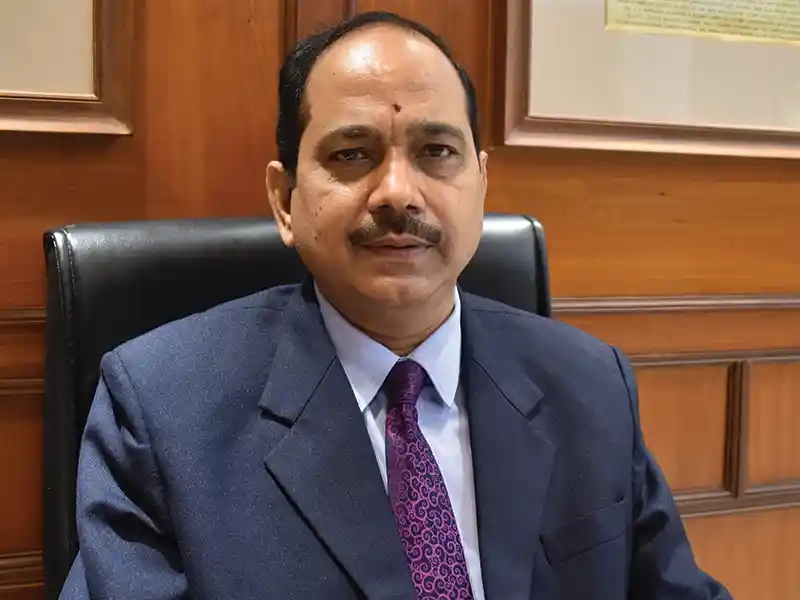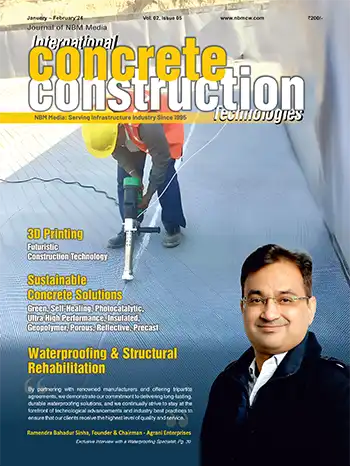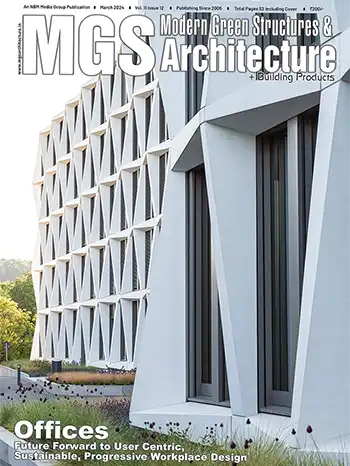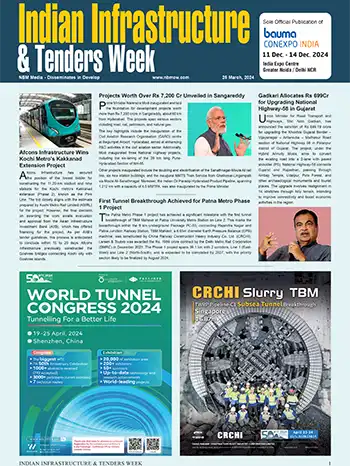Balmer Lawrie Bringing Efficiencies in Logistics

What is driving change in the logistics industry of India?
Covid-19 has revealed the weaknesses and inefficiencies of India’s logistics system. There was chaos in international freights, with sky rocketing prices, and lack of space was hitting the businesses of exporters and importers. However, despite the lockdowns, the industry worked relentlessly to ensure that domestic supply chains were maintained - be it pharmaceuticals, edible products, industrial products, etc.
There is a need to shift to a more formal and technologically capable organisation for the industry to meet the challenges that are yet to come. Almost all the small, informal logistics players in the country’s supply chains (for instance, firms that operate 75% of India’s trucks) are incapable of adapting to rapid technological changes. Many of the larger logistics companies may also find it a challenge.
On the bright side, the Indian logistics sector is being spurred by a chain of policy changes and infrastructure upgrades. Reforms began with GST and the e-way bill. Furthermore, the development of support infrastructure and technology is improving connectivity.
How is digitization brining greater efficiencies in warehousing?
The kind of agility and the technological sophistication that the pandemic demanded, has become a necessity for survival, and not just a competitive advantage. With the modern state-of-the-art warehouses with improved Material Handling Equipment (MHE), coupled with IT expertise and digitization all across the globe, India too is keeping pace with the progress. We have seen examples of automated sorting facilities that make use of hub-and-spoke model and increase the overall efficiency by digitization.
The future of warehousing depends on the integration of IT with the processes in place to ensure that maximum throughput is seen at higher efficiency levels to bring down the overall costs and improve the effectiveness of the service offerings. Artificial Intelligence has already started playing a major role in improving efficiencies in warehouses. The more successful larger companies in the logistics sector may gravitate towards artificial intelligence, blockchain, and other technological solutions to help solve the present cash crunch and other problems.
What issues do you see with respect to turnaround times at Indian ports and what are your suggestions to lessen them?
The average ship turnaround time at India’s major ports is gradually reducing due to the various measures taken by the Government to improve ease of doing business. Capacity at major Indian ports has also expanded over the years, with cargo handling capacity at 13 major ports increasing since 2014.
The Indian maritime sector, which includes 12 major and 200 minor ports, moves about 95% of India’s trade by volume and 68% by value. The reduced turnaround times will help in improved efficiency and reduced cost. I strongly feel that upgradation in port facilities and infrastructure may lead to elimination of berthing problems, which is one of the reasons for higher turnaround time in Indian ports. Proper dredging activities will help in maintaining proper draft levels. IT initiatives and paperless documents will play an important role in improving the overall efficiencies.

How do you see the Gati Shakti and National Logistics Policy integrating Logistics in India in the near future?
Hon’ble Prime Minister’s Gati Shakti National Master Plan for Multi-Modal connectivity to various Economic Zones has been introduced with an aim to improve the logistics sector. Gati Shakti plan is aimed at breaking inter-ministerial silos and integrating the planning and designing of projects with a common and holistic vision, enhancing India's global competitiveness through next-generation infrastructure and seamless multi-modal connectivity, bringing logistics efficiency with technology adoption and speedier implementation.
The Logistics policy is aimed to create a single window e-logistics market and focus on generation of employment, skills and make MSMEs competitive. The aim of these interventions is to help in reducing the overall logistics cost. It will facilitate the last mile connectivity of infrastructure and reduce travel time, which will help the Indian industry to compete in the international market.
Steps have also been taken to address other issues like time-taking approval process, multiplicity of regulatory clearances etc. In the last few years, the Government has ensured unprecedented focus on infrastructure through a holistic outlook. This helps to address the past issues through institutionalizing holistic planning for stakeholders for major infrastructure projects. Instead of planning and designing separately in silos, the projects will be designed and executed with a common vision.
The Indian government has brought in digitized solutions for the logistics industry like the Indian Bridge Management System for transportation of ODC. How do you see such systems helping the industry?
The Indian Bridge Management System (IBMS) was conceptualised in October 2016, by the then Minister of Road Transport & Highways (MoRTH) and Shipping Shri Nitin Gadkari to create an inventory of all bridges in the country and rate their structural condition so that timely repair and rehabilitation work can be carried out based on the criticality of the structure.
India has over 1.50 lakh bridges including culverts situated on NH, SH or on district roads. The database for the bridges will help in identifying the structural condition of the bridges and culverts for timely repair and maintenance, based on the criticality of the structure, and making it effective for smooth transportation of OWC / ODC through those bridges. This is an enormous step taken by the Ministry towards achievement of zero accident. By launching IBMS, the long process of obtaining permissions from MoRTH, GOI has been reduced and this has provided access to the OWC / ODC carriers to the unforeseen hindrances and dangers enroute especially on the bridges.
I feel that online risk management system for the transportation of ODC / OWC is very essential to have control on various agencies involved in the movement. The use of technology such as in-motion weighbridges and in-camera dimension checks to enforce specific rules related to ODC / OWC, system-based issuance of fines, penalties, and alerts, will minimise the need for human decisions and ensure maximum transparency and accountability. This can be further enhanced by using modern technology. We should look at incorporating some type of ratings of the transporters, drivers, and other stakeholders with alerts and warnings across highways and states, related to the movement of types of goods to and from the destinations.
How do you see the market for heavy lift cranes in India?
The crane market is growing due to increasing demand from the construction sector. Nowadays, manufacturers are focusing on renting or leasing the cranes / hoists, which has become a trend in the market. Additionally, increase in investment by Govt. and Private firms in the infra-sector is driving market growth.
Rapid urbanisation in Asian and African countries is creating huge demand to easily transfer material (which are considered heavy lifts). Oil & Gas, Mining, Automotive and the Construction industries are rapidly growing with a lot of infrastructure projects coming up where heavy lift cranes are needed. This is creating a positive impact in the market for cranes.
The growing preference for renting equipment is opening opportunities for manufacturers to collaborate with rental equipment companies as part of the efforts to augment their sales. On the other hand, rental companies are focusing on procuring new equipment and expanding their fleet size to cater to the rising demand for rentals.
On their part, OEMs can have product specifications which are more regional. For instance, a mobile crane that suits the Asian market may not be suitable for the European market. Safety features can keep evolving to make the cranes as safe as possible.
Please share a case study of an ODC transportation done by Balmer Lawrie recently?
Balmer Lawrie has immense experience and expertise in the field of handling and movement of ODC / OWC, explosives / DG Cargo, sensitive equipment and strategic movements. In the recent past, we have handled export shipment of 380 MT NEQ of explosives in containerised equipment in a single vessel from a port in South of India to the Middle East. The entire movement included coordination with stakeholders like the production factory, PESO, MMD, UN certification from IIP, Road / Rail transportation, exit Port Gateway authority, carrier owners, and internationally certified surveyor. The movement was done by road in convoys with armed escorts till the terminal outside the city limit. This was an Ex works to Delivery at Discharge port using Multi Modal Logistics.
We are currently handling ODCs / OWCs, which are self-propelled equipment. This movement consisted of a proper route survey from the Port of Discharge till the site to carry out the logistics smoothly and safely. Articulated modular ramp with a load bearing capacity of 300+ MT was constructed at the port and at site with adjustable gradient for loading and unloading of the cargo with safety and security. The cargo was moved and delivered successfully in an efficient, effective, and time-bound manner, and with no detention, demurrage, or damage to the cargo.
Lifting & Specialzed Transport, August - September 2022


















